The lesser and greater flamingos of Gujarat that migrate to our wetlands are nothing short of a blessing. Every year a record number of juvenile waders and flamingos visit the TS Chanakya Lake, feeding on urban algae.
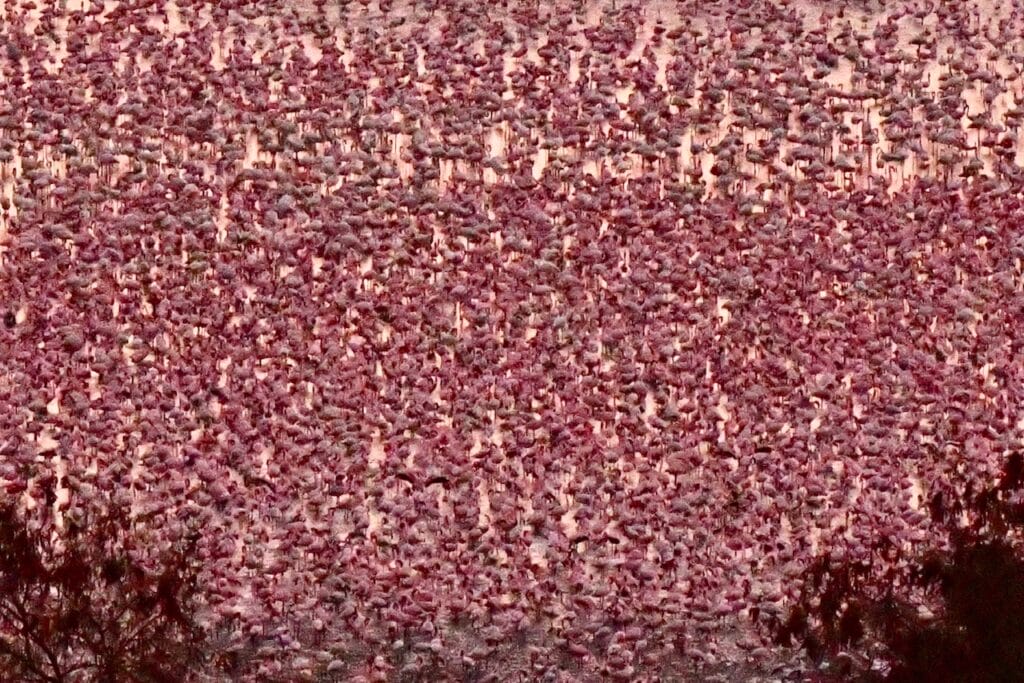
Read more: How a Navi Mumbai citizens group fought for the flamingos
After strenuous breeding activities they fly to the flamingo city of Navi Mumbai to feed and roost in TS Chanakya and NRI wetlands in large numbers. While, the species is in an overall decline, the mudflats and mangroves of Navi Mumbai offer them both roosting and feeding opportunities.
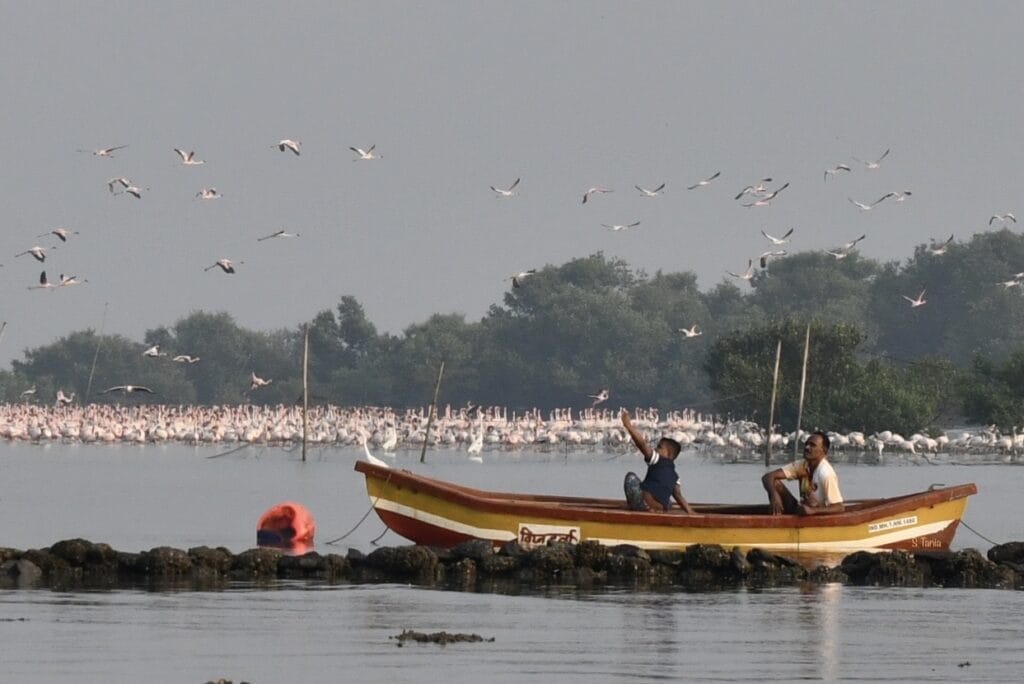
Unfazed by the locals going about their fishing rounds, the lesser and greater flamingoes nourish themselves side by side. Eventually, they attain their pink, choose their mate, and fly out for another breeding cycle.
Read more: Photo Essay: Mangroves and their ecosystems
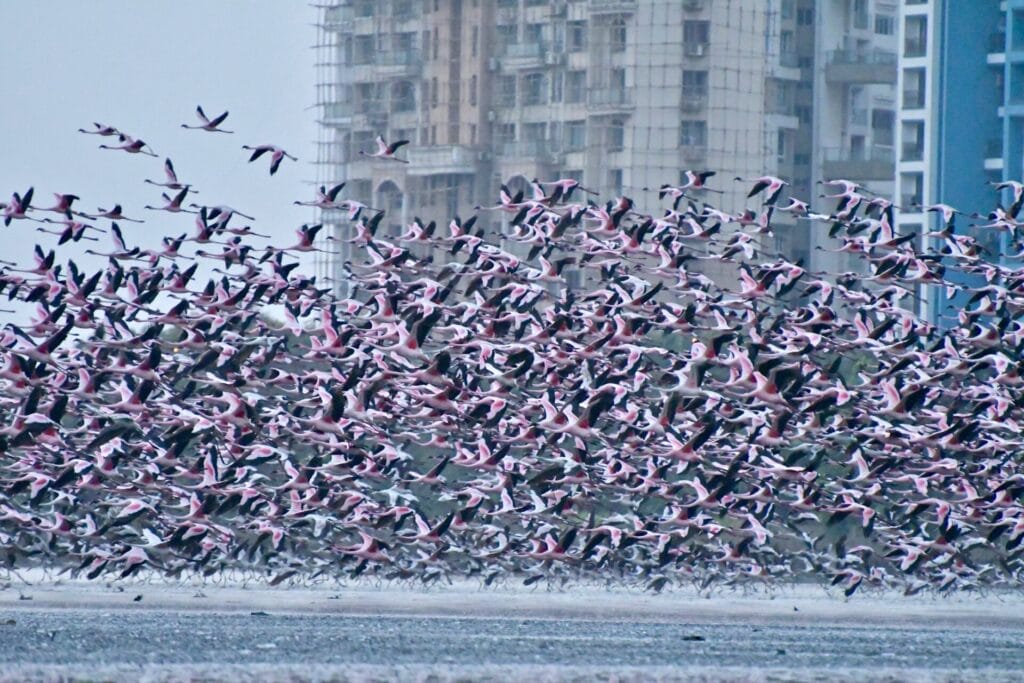
In populous cities like ours, scrublands with rich fauna and flora are regarded as wastelands, eventually marked as developmental land. In TS Chanakya, plans of a golf course and 17 storied residential buildings have been in the works. In the process, the homes of tens and thousands of avians are re-classified. “This is not a wetland ”- They might say as they make their plans.
Recently a number of mangroves that border TS Chanakya Lake, were razed overnight– possibly the first step in bringing these new development plans to fruition.
Mangroves are trees that walk with their roots and talk with their deeds. Many animals take refuge in the mix of their long roots. In fact, the Indian golden Jackal and the elusive jungle cat are completely restricted to mangroves, due to habitat decline. During storms, flamingos seek refuge towards the mangrove areas.
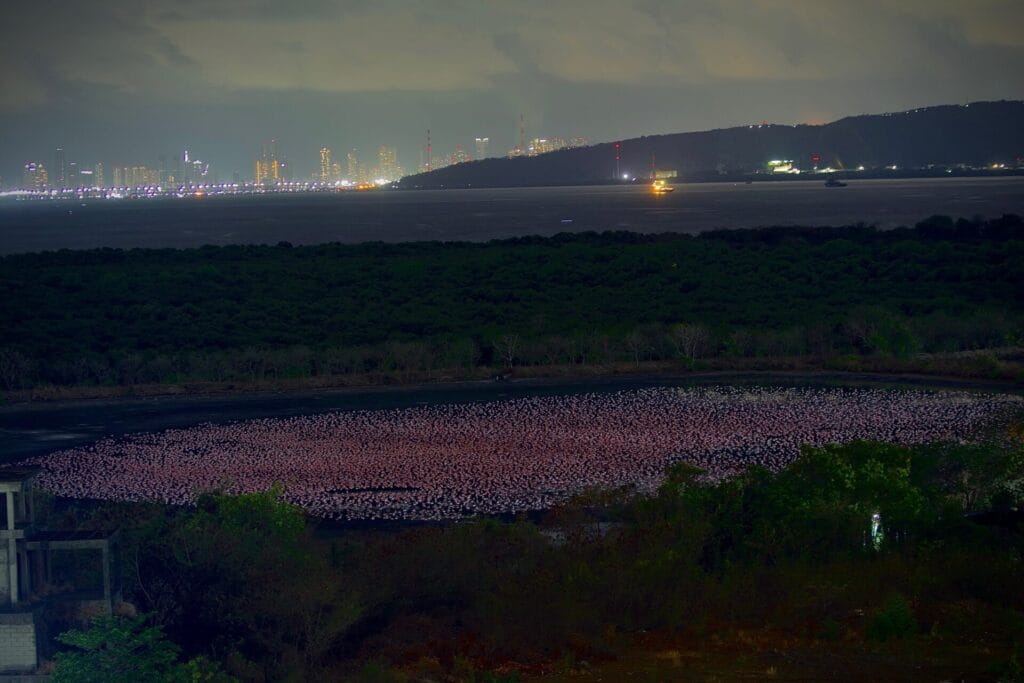
While opportunists will create a false sense of progress to generate revenue, it appears the longevity of both human life and wildlife is compromised in the process.
Read more: Migratory birds of Navi Mumbai
After the mangroves were razed, photographers, bird watchers, and residents of Navi Mumbai came together to protest the state’s mishandling of the wetland and mangroves. “Chalo Chanakya” we say every Sunday, as we walk through a dry brown scrubland- the remainder of the 125 mangroves that once bordered the lake and its inhabitants.
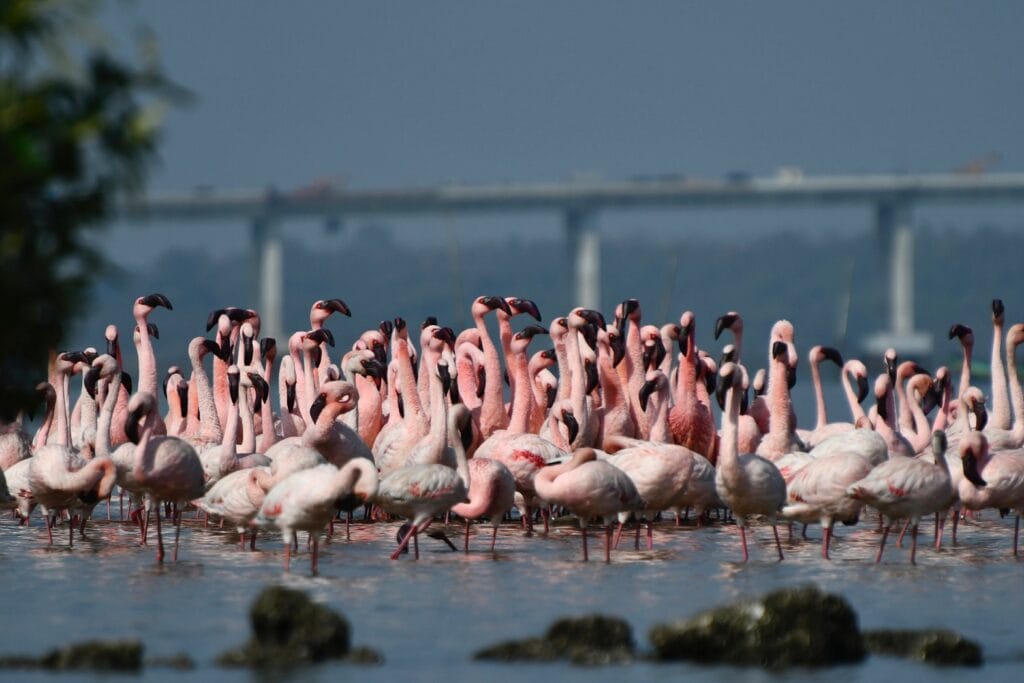
The protests aim to highlight how, despite the tag of being ‘wastelands’, it becomes important to preserve these wetlands as they are extremely important for migratory birds. The city forgets that this site has recorded over 200 migratory species feeding in its intertidal waters, including passage migrants like the spotted flycatcher, brown breasted flycatcher, the Eurasian hobby and the European roller.
So tell me then, is this not a wetland?
(Writing assistance provided by Savitha Ganesh.)
| Do you live near wetlands or visit them to see the migratory birds? Do you have any suggestions for conserving the wetlands and enabling migratory birds to flourish on these sites? Please share your thoughts and experiences with us at mumbai@citizenmatters.in. |
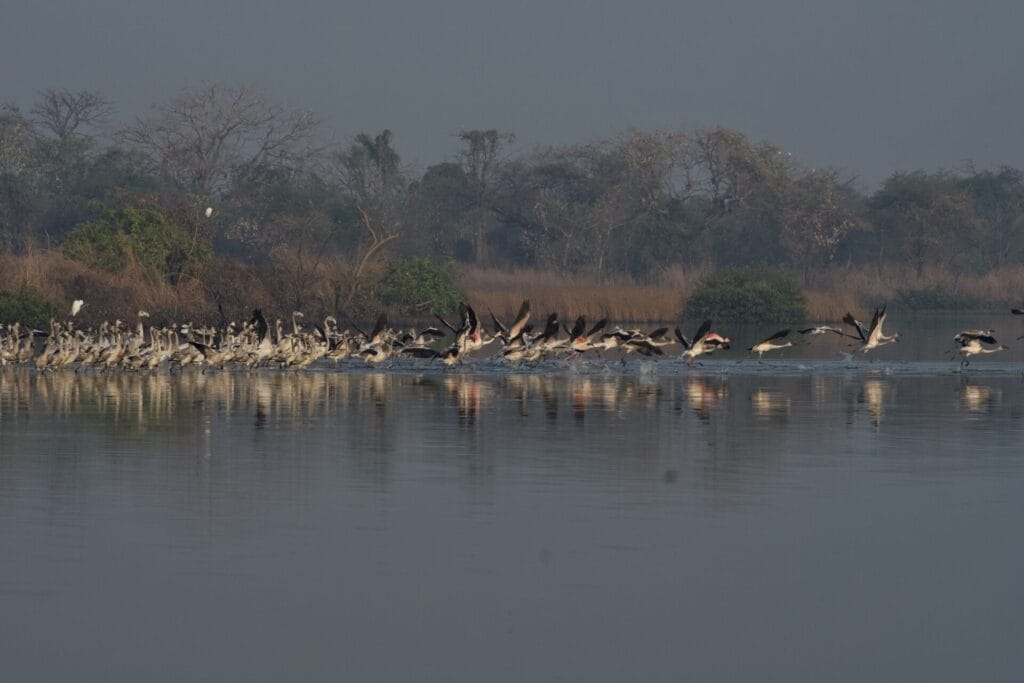
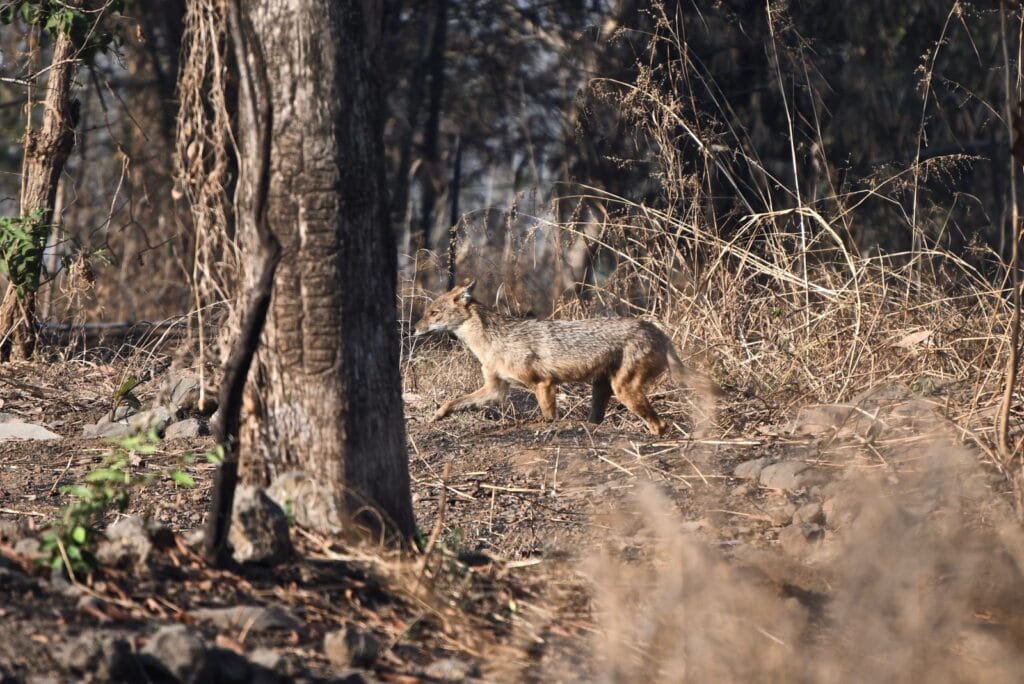
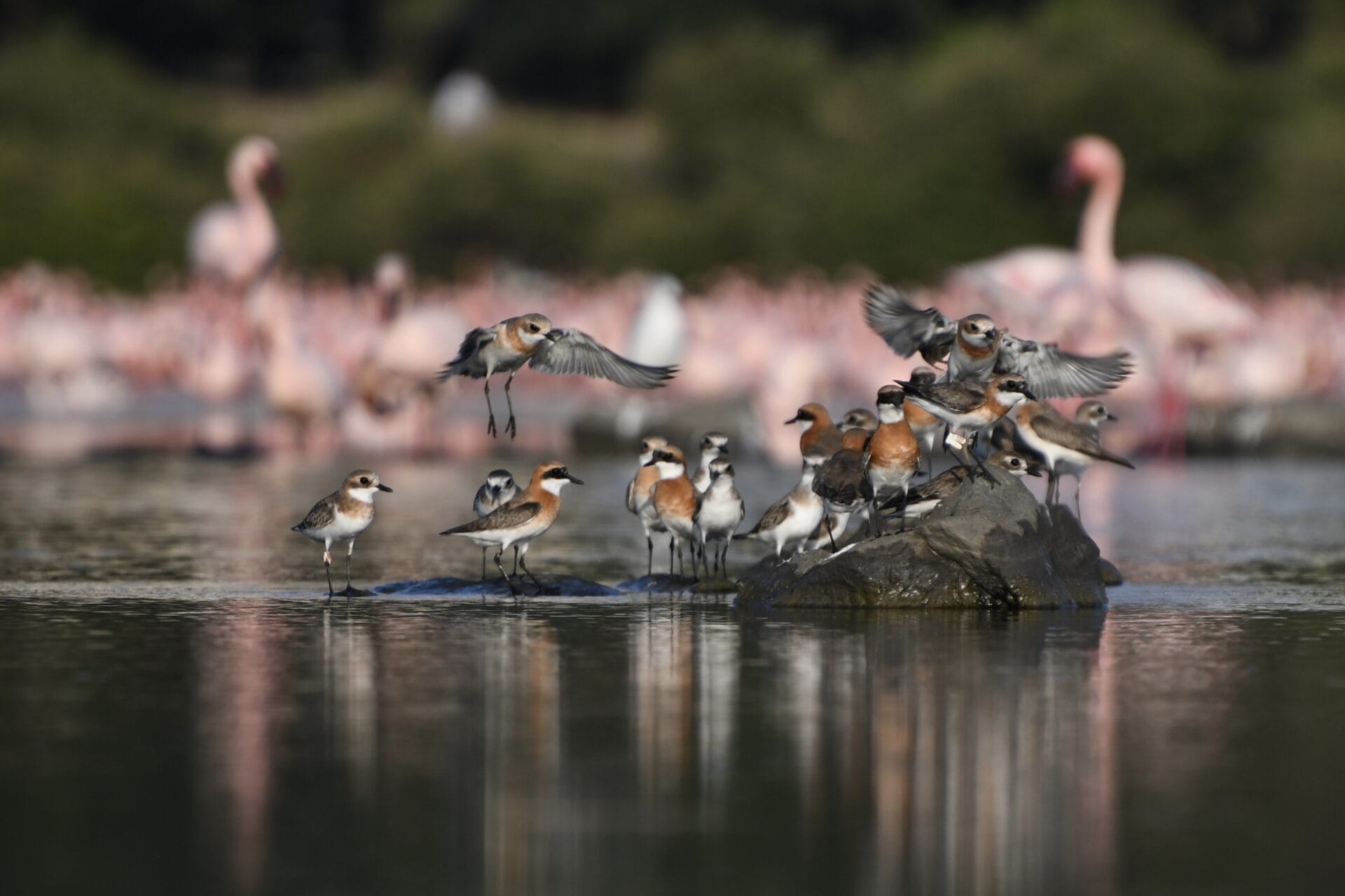
Very well written. Thanks Seema for excellent photo essay & raising the issue of mangroves cut indiscriminately and chalo chanakya by local residents.
In Mumbai, today, land is costlier than gold. So naturally,the powerful & politically connected people would like to rake in the mula. They will use all sort of techniques to convert these wetlands to residencial land. They have no knowledge or concern about nature and all they want is to earn money. Moreover, the laws governing these wetlands are not strong enough and loopholes within can be used to manipulate them changing the status of the land parcel in records. Money will change hands under the table & everything will be legally regularised. The only hope for the nature is these nature lovers who selflessly try to protect them against all odds. Atleast we could unite & give it a try to save the wetlands instead of sitting idle & let them vanish in front of our eyes. Lets hope for the best.
Authorities are only interested to make artificial Flamingo in the City and make money out of that, they are more interested convert these wetlands into land all big land mafia’s I mean land sharks are ib’Q’ to destroy rich habitats of wild animals and birds.
In the name of Develpament they are destroying all the nature around the city to just make money, as we already fighting with global environment crisis temprature rises day by day, ground water disappearing slowly, water shortage, weather changes all because of dis balance of ecosystem. These wetlands are playing vital role to balance ecosystem, control floods as they are playing role of spoung. Millions of life’s depends on this, help to reduce temperature of the surrounding. After knowing all these still authorities are behind to destroy it. Shameful.